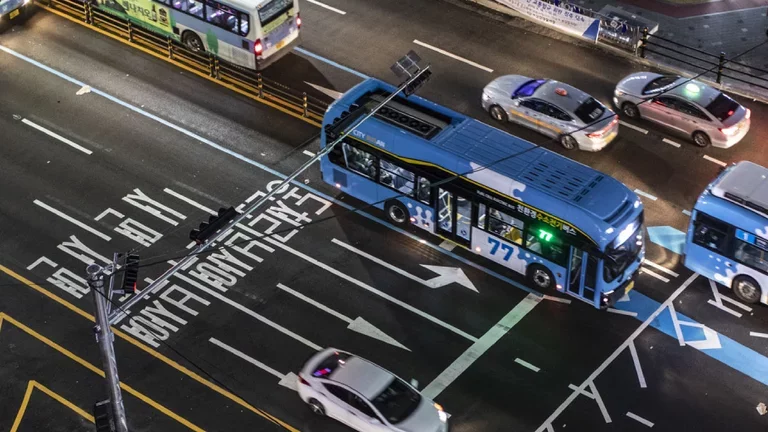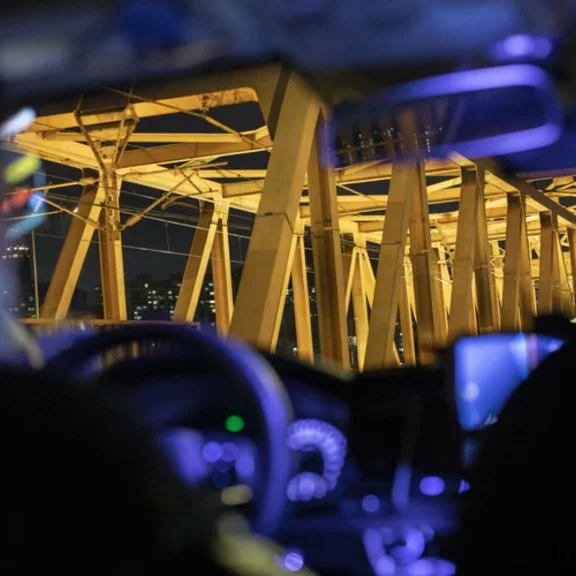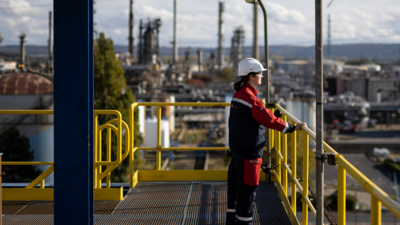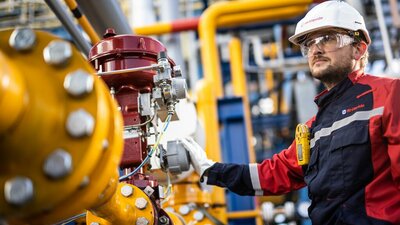Hydrogen is becoming a major solution for the energy transition, attracting growing interest from multiple stakeholders worldwide. As a pioneer in this field, Air Liquide is bringing its expertise to mobility as well as numerous industrial processes.
In June 2019, the environment ministers at the G20 meeting in Japan officially announced their intention to cooperate on promoting the use of hydrogen. This agreement was motivated by the climate emergency and the significance of recent innovations for a hydrogen energy society. Co-chaired by Benoît Potier, Air Liquide Chief Executive Officer, and Euisun Chung, Executive Vice Chairman of Hyundai Motor Group, the Hydrogen Council has grown from 13 members at its inception in January 2017 to more than 80 manufacturing and investment partners three years later. Politicians, business leaders and researchers all agree on one point: hydrogen has a key role to play in the energy transition.
Recognized strengths
This gradual alignment of the various leaders is a remarkable acknowledgment of the pioneering work carried out by Air Liquide, which has been producing and transporting hydrogen for nearly 50 years. This molecule, which is light, storable and transportable can be used in fuel cells with double the efficiency of traditional internal combustion engines. Hydrogen is a carrier for low-carbon energy — with zero greenhouse gas emissions and zero particles at the point of use — that can be produced by virtuous processes such as electrolysis.1
The Bécancour proton exchange membrane (PEM) electrolyzer will save 27,000 tons of CO2 emissions annually compared to traditional hydrogen production processes
It has vast potential, particularly for sustainable mobility, but also heating and heat networks, clean manufacturing processes, eco-friendly IT servers and renewable energy storage to compensate for intermittent production.
With a charge time of less than 5 minutes and an autonomy of more than 770 kilometers2, hydrogen fuel cell vehicles offer an effective solution for intensive use and long trips, which represent the bulk of CO2 emissions in the transportation sector.
By reducing greenhouse gas emissions, urban pollution and reliance on petroleum-based fuel, hydrogen is proving its worth.
Unique expertise
As an expert in this molecule, Air Liquide can apply its expertise at every step of the hydrogen value chain, from production to distribution and storage. Managing around 200 production units and thousands of kilometers of pipeline, the Group has also designed and installed more than 120 charging stations worldwide. In addition, Air Liquide is committed to producing low-carbon hydrogen using water electrolysis, biogas and even Cryocap CO2 capture technology, which it has implemented at its largest French production facility in Port-Jérôme since 2015.
Éric Sebellin
Markets and Strategy Director at Air Liquide’s Hydrogen Energy business line.
Tangible solutions for industry and transportation
The Group has been building on its expertise to help industrial clients find low-carbon solutions. In 2019, Air Liquide collaborated with thyssenkrupp Steel on an innovative project for low-carbon steel production based on hydrogen.
It is also contributing to the widespread deployment of hydrogen in transportation, a sector responsible for 24% of CO2 emissions3. From forklifts, buses and trucks to utility vehicles or even trains and ferries, hydrogen fuel has numerous applications.
In same vein, the Group is also supporting China, which is actively involved in reducing greenhouse gas emissions. Already present in the country with around 90 industrial gas production plants, the Group has set up a joint venture with Houpu to install and market hydrogen charging stations.
It has also signed a memorandum of understanding with Sinopec (China Petroleum & Chemical Corp) to help accelerate the rollout of hydrogen mobility solutions in what represents the world’s largest mobility market.
Air Liquide will offer Sinopec its expertise in hydrogen supply chains to bring competitive solutions to the Chinese clean mobility market.
By 2050, hydrogen could account for 18% of the global energy mix
Creating an entire value chain
Aiming to become a leading supplier of low-carbon hydrogen, the Group has committed to producing 100%4 of the hydrogen intended for the mobility market from virtuous processes5 by 2030. In the United States, Air Liquide has invested 150 million dollars in low-carbon liquid hydrogen production to supply the Californian market and meet the State’s ambitious targets: installing 200 charging stations by 2025 to drive the development of the world’s largest fleet of hydrogen-powered electric vehicles. Another major investment announced in early 2019 is the construction of the world’s largest membrane-based electrolyzer for the production of carbon-free hydrogen. This 20 MW electrolyzer will increase the current capacity of the Bécancour plant in Canada by 50% and help supply North American markets for industrial use and mobility.
Through its numerous innovations and achievements, Air Liquide is playing a leading role in making hydrogen a global reality and paving the way to a more environmentally friendly society.
2 Bertrand Piccard drove 778 km in a standard Hyundai NEXO in normal traffic conditions.
3 According to the International Energy Agency, 2017.
4 When the right regulation is in place.
5 Biogas, renewable energies generated by water electrolysis, and capture and processing technologies for the CO2 emitted in natural gasbased hydrogen production.
Air Liquide’s current hydrogen production is capable of charging 10 million hydrogen vehicles
Discover our 2019 Annual Report





